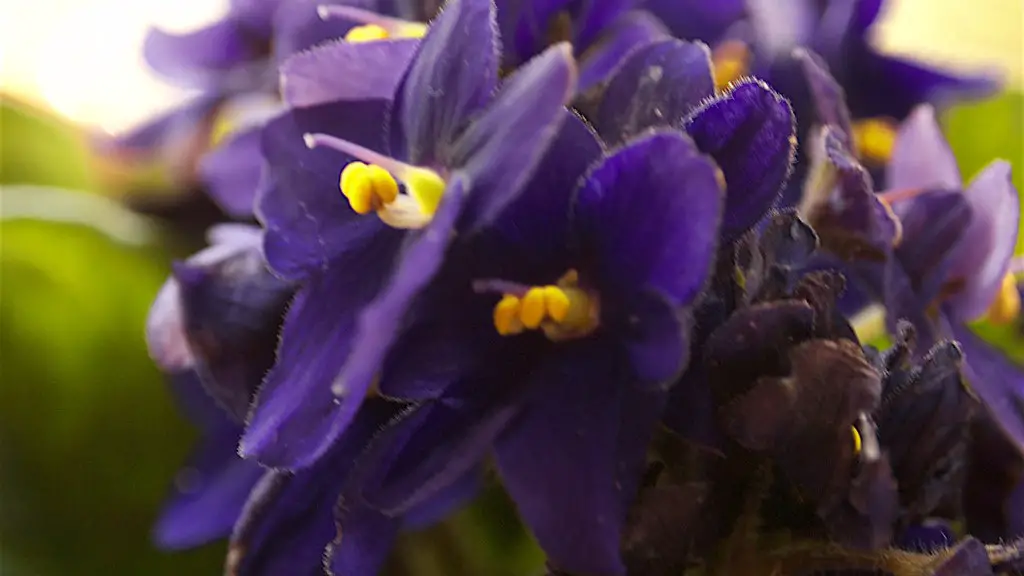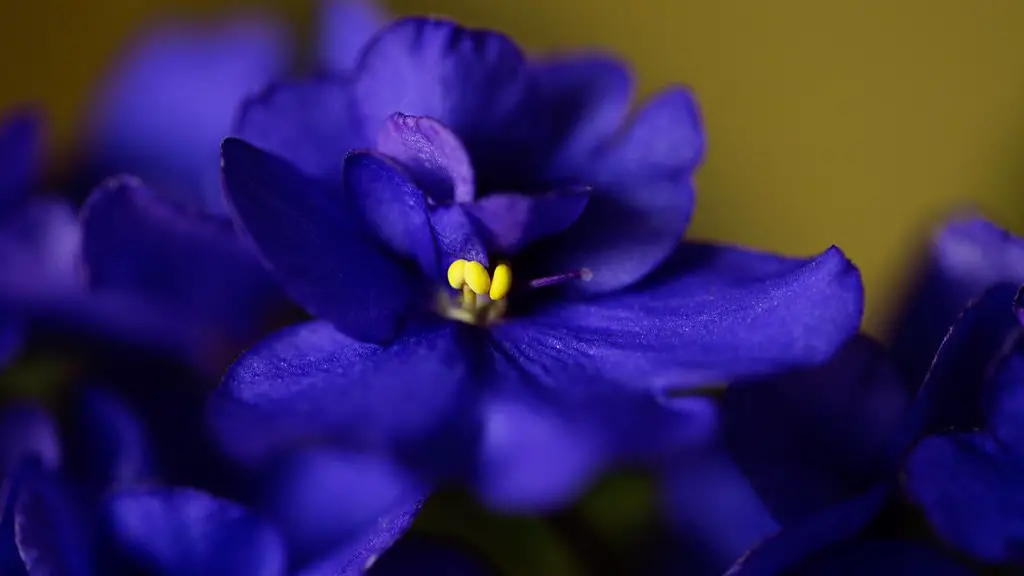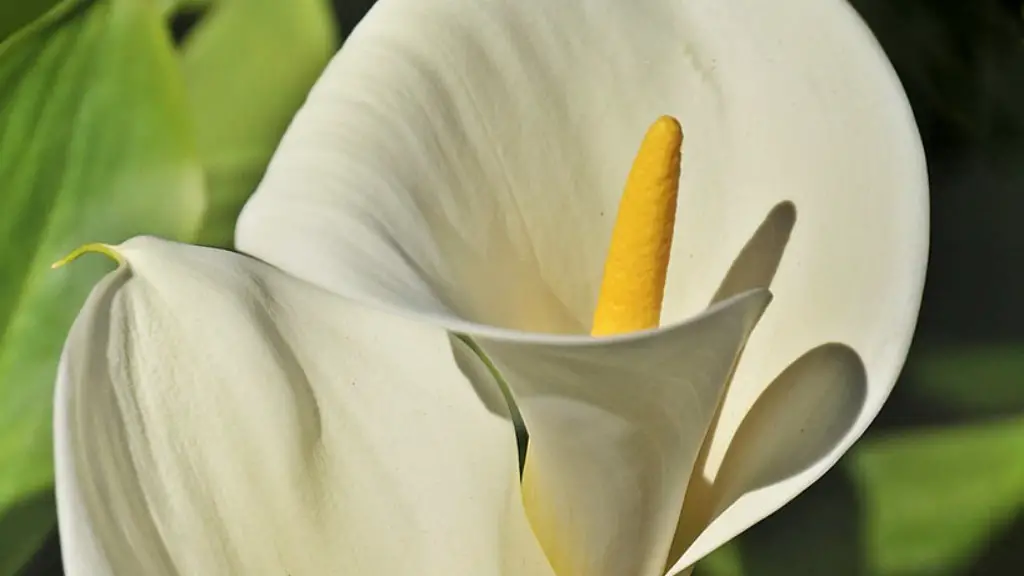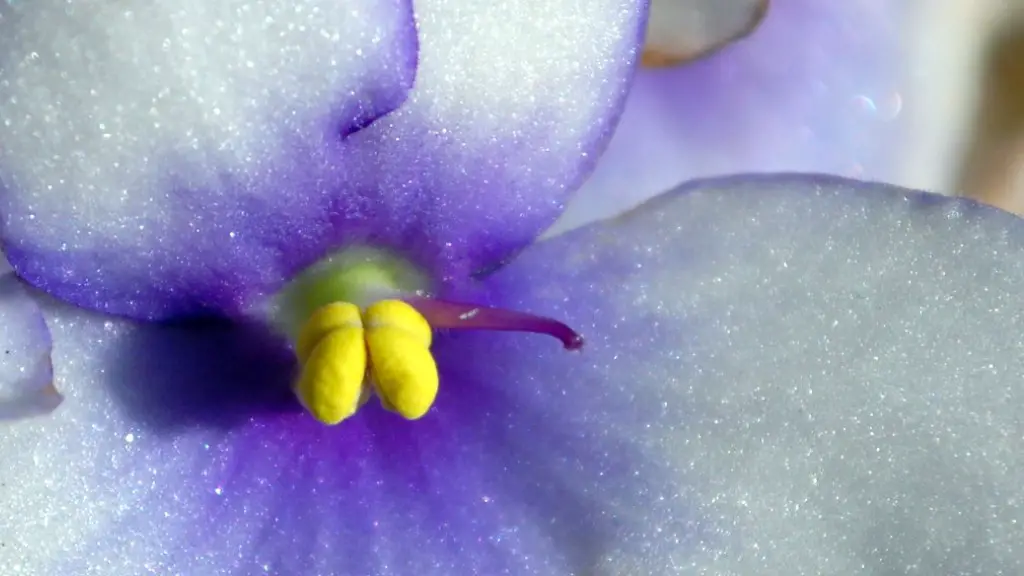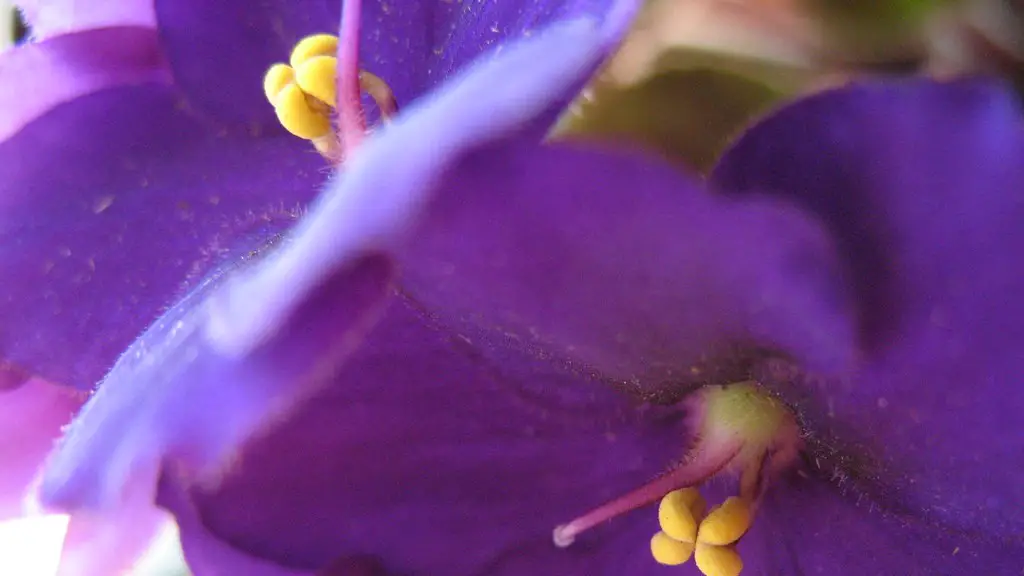African violets are a type of flowering plant that originated in Africa. They are known for their beautiful flowers and ability to thrive in warm, humid climates. African violets can be grown outdoors in Africa and other warm regions, or indoors in cooler climates. With the right care, African violets can grow and bloom all year round. Here are some tips on how to get African violets to grow:
To get African violets to grow, you need to provide them with a warm, humid environment and plenty of indirect light. Water them regularly, using lukewarm water, and fertilize them every two weeks.
What is the secret to growing African violets?
If you want your plants to have the best color and blooms, grow them in bright, indirect light. A plant stand three feet away from a west- or south-facing window is an ideal location. Plants will still grow when situated right beside north- or east-facing windows, but leaves will be thin and spindly, and plants less likely to bloom.
If your African violets are not flowering, insufficient light is probably the most common reason. If violets are growing in too little light, the leaves become darker green and thin, petioles or leaf stems are very long and weak, and the plants flower very little if at all.
How often should African violets be watered
Wicking systems are great for African violets because they help to make sure that the plant never gets over watered. A wicking system is basically a container that holds water and has a wick that goes down into the soil of the plant. The wick helps to bring water up to the plant as needed, and the plant can then take what it needs and the excess water will just drain back down into the container. This system is great because it means that you only have to water your African violets once a week, and the plant will never be sitting in water.
Peat- and perlite-based mixes are ideal for African violets as they provide good drainage and aeration, which is essential for the plant’s root system. Avoid mixes that are too dense and heavy, as this can inhibit root growth and lead to fewer blooms. Pots that are one-third to half the diameter of the plant are ideal for promoting healthy growth and abundant blooms.
How do I force my African violet to bloom?
If you want your African Violet to bloom again, there are a few things you can do. First, make sure it has enough light. It should be in a bright spot, but not in direct sunlight. Second, turn up the humidity. African Violets like it to be moist, so you can mist it or put it on a pebble tray. Third, replenish essential nutrients. African Violets need to be fed every few weeks with a fertilizer made specifically for them. Fourth, keep it pleasant. African Violets like it to be between 65 and 75 degrees Fahrenheit. Fifth, choose the right soil. African Violets need a light, well-draining soil. Sixth, protect from pests and disease. Inspect your African Violet regularly for any pests or diseases. Seventh, constrict the roots. When you repot your African Violet, make sure the new pot is only slightly larger than the old one.
African violets need bright, indirect light to thrive. A spot near an east- or north-facing window is often a good choice. Keep them out of direct sunlight, which can scorch their leaves. If you don’t have a suitable window, African violets can also do well under fluorescent light. Look for a fixture that contains two 40-watt fluorescent tubes.
Do African violets like bigger pots?
When potting your African violet, be sure to choose a pot that is on the smaller side. This will help to keep your plant healthy and thriving. Additionally, be sure to provide adequate drainage for your plant. Professional Tip: If you have a standard African violet plant, your starter pot should be about 3-4 inches in diameter.
When watering your African Violet, be careful not to mist the foliage as this can cause permanent leaf spotting. Use water that is room temperature and make sure the crown (the section of the plant at soil level) is not saturated with water in order to avoid crown rot.
Can I use regular potting soil for African violets
African violets prefer slightly acidic conditions in order to absorb nutrients efficiently. Conventional soil usually has a higher pH, which makes it difficult for African violets to absorb nutrients. To lower the pH in African violet potting soil, peat moss is usually used.
Watering your plants is important to keeping them healthy and encouraging blooming. Water from the bottom with room temperature water by placing the plastic grower’s pot in water, and allowing the plant to absorb the water ( not more than 30 minutes ).
Can I water African violets with tap water?
If you’re unsure about the quality of your tap water, it’s best to err on the side of caution and use filtered or distilled water for your African violets. Chlorine, chloramines, and dissolved solids can all adversely affect these delicate plants, so it’s best to err on the side of safety.
If you over-water your African Violet plant, the soil will retain too much water. This retention of water will cause the leaves and /or leaf stems to turn soft, limp or mushy.
Why won t my African violet grow
If you’re African violet isn’t blooming, it’s likely because it’s not getting enough light. African violets need indirect sunlight – direct sunlight can burn the leaves. Choose a north- or east-facing window for best results. Keep plants away from cold glass and rotate the pot once a week so all leaves receive light.
Use as directed on the package. For best results, mix with lukewarm water and apply to African violets and blooming houseplants every 7-10 days.
Should you let African violets dry out?
Overwatering can kill an African violet because the fine roots of the plant need air. The plantshould be allowed to dry out between each watering for best results.
Some people love wild violets for their decorative properties while others find them to be a nuisance weed because of how aggressive they can be. It can be difficult to control their growth, which is why some people choose to avoid them altogether.
Final Words
To get African violets to grow, you need to provide them with the right environment. African violets need a warm, humid environment with plenty of bright, indirect light. The soil should be well-draining but moisture-retentive. African violets also benefit from being fertilized regularly.
When it comes to getting African violets to grow, there are a few key things to keep in mind. First, African violets need bright, indirect sunlight in order to thrive. If you can provide them with this type of light, they should do well. Second, African violets need to be watered regularly, but be sure not to overwater them. Allow the soil to dry out somewhat between waterings. Third, African violets benefit from being fertilized every few weeks. Use a water-soluble fertilizer that is specifically designed for African violets. If you can provide your African violets with these basic care needs, they should do well.
